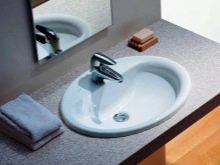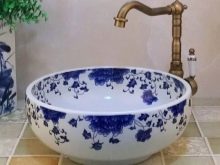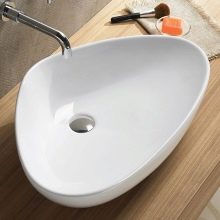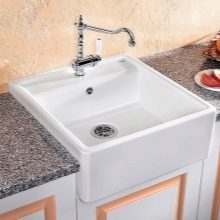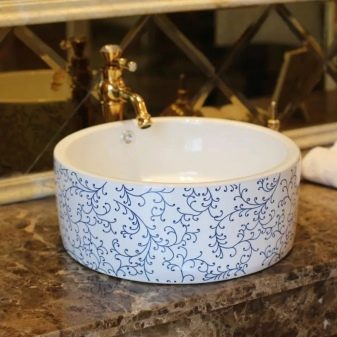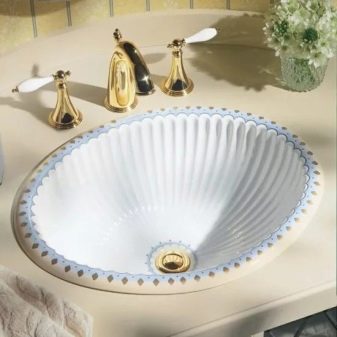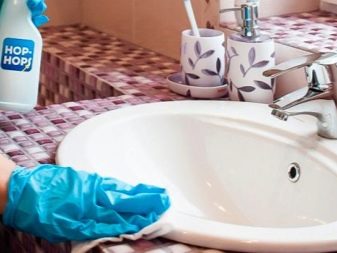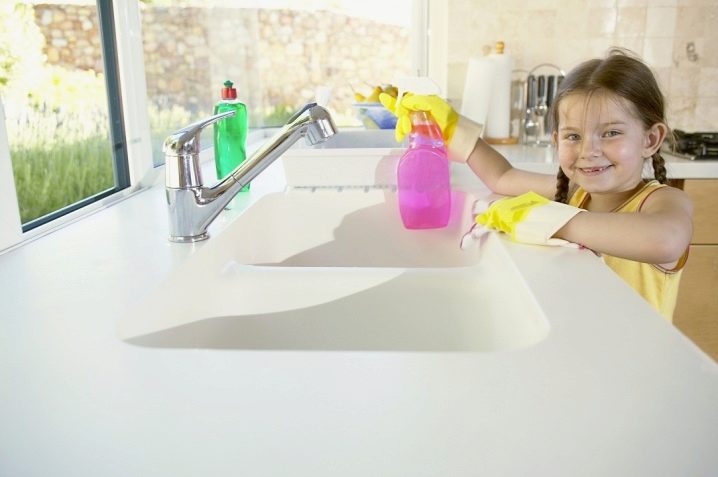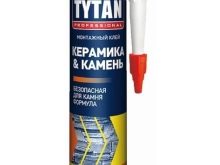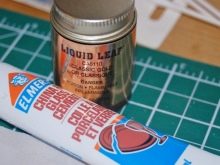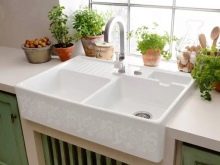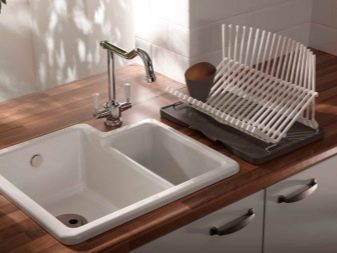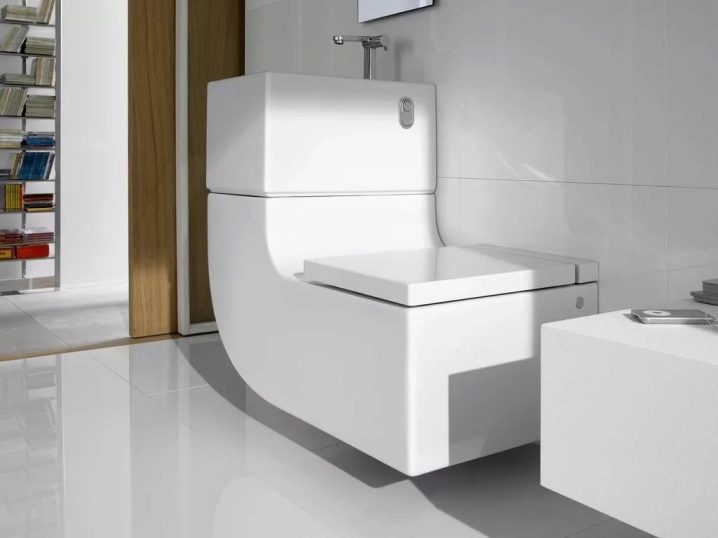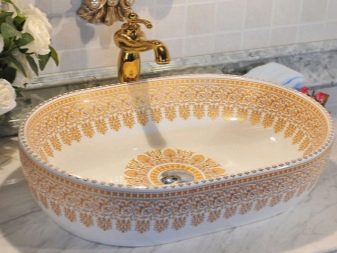Earthenware sinks: features of choice
In an effort to provide as much comfort as possible to consumers, manufacturers are creating increasingly sophisticated devices for the home. The bathroom is no exception. Even the most familiar plumbing is changing, acquiring new functional properties and external features.
The stores have a huge range of products for every taste and wallet, so choosing the most suitable option for a particular bathroom is quite easy.
Shell Material
The material from which the sink is made, in many respects determines the period of its use, strength and practicality in care. The most common materials are porcelain, earthenware, natural or artificial stone, steel, glass.
Porcelain and earthenware are ceramics obtained by firing clay using a special technology. For porcelain, the highest grade clay is used, which is burned at a temperature of 1000-1100 degrees.
In the production of faience components are used in a different proportion and the firing temperature is lower - 950-1000 degrees. As a result, the earthenware is more porous, more susceptible to moisture and dirt.
To eliminate these problems when firing, earthenware is coated with a layer of glaze.
The advantages of faience sinks
The main advantage of faience products is that the material does not lose its properties over several years of operation. This also applies to the appearance of the product.
It is resistant to the effects of cosmetic and household chemicals, to sudden temperature changes and prolonged exposure to cold or heat. The material has a high degree of electrical insulation, which is important for rooms with high humidity.
The disadvantages of faience sinks
Faiths do not have much outstanding flaws.
Unlike faience, porcelain is a highly porous structure. Therefore, with mechanical (even the smallest and imperceptible) surface damage, dirt, moisture and microbes get into the pores. As a result, stains and unpleasant odors may appear.Therefore, porcelain products need more thorough care and cleaning.
If there is no desire or opportunity to carry out frequent cleaning of the bathroom, it is better to choose a faience. It can also show spots in the surface microcracks, but due to the glazed coating this happens extremely rarely.
Also, many fear the fragility of such products. However, in ordinary life, situations in which it is possible to split or smash a faience sink are unlikely (except during transportation or installation).
Features of the repair of faience sinks
Despite the fact that the probability of damage to the faience sink is extremely small, it is still there. For example, you can drop something heavy into it, a mirror or a shelf can fall on it, etc.
In this case, you can buy a new sink and replace the broken one. If there is no free money to buy a new product, you can repair the old one.
Repair of faience products is made only with glue. The adhesive composition can be diluted with a color of the desired shade to make the seam as inconspicuous as possible.
Drilling holes in faience
When installing sinks it is sometimes necessary to drill a hole.Usually, such work is tried to be trusted by experienced craftsmen because they fear the appearance of cracks in the material. If you do everything strictly according to the rules, then there will be no side effects when drilling.
Drilling is recommended either with a jigsaw (it is better to use a diamond or tungsten string) or with a tubular diamond drill. In both cases, the tool affects the material without any harmful effects, which has a positive effect on the appearance of the earthenware after the repair.
Features faience kitchen sinks
Faience is also suitable for the kitchen sink: it is practically not visible mechanical damage, it is practical to use and easy to clean. Such a sink can withstand the weight of kitchen utensils made of cast iron, copper and steel.
As a rule, faience sinks are chosen for the design of kitchens in country style (rustic style). The shell can be of any shape: square, round, rectangular, oval or asymmetric. Usually it is cut into the kitchen furniture, it can be recessed or stand sideways above the table top. The built-in sink is more stable, and the kitchen countertop provides support for the product,compensating for its weight.
For the kitchen choose faience sinks and those who care about the environmental situation in the house. European manufacturers have completely abandoned the use of lead in the plumbing manufacturing process, focusing on the environmental safety of their products. Gradually, this trend is picked up by Russian manufacturers.
With frequent use of earthenware it is recommended to polish: after rubbing the sink about once a week to rub its surface with wax. Then give the wax to dry for half an hour. So the sink will serve and will keep the external gloss much longer.
Custom sink models
Popularity is also gaining the use of faience in the manufacture of models of sinks, designed to perform several functions simultaneously.
The model of sanitary device 60 cm is a sink, which is combined with a toilet. It is designed for small premises, allowing a significant reduction in the used space. In addition, will appeal to those who seek to save the consumption of natural resources. To glue it if necessary is not at all difficult.
Selecting a suitable sink for a washbasin is easy. Today, earthenware in no way inferior to porcelain, but in some ways even surpasses it. It has excellent technical characteristics, and its restoration does not require much effort. The material with the picture has mostly positive reviews. It remains only to choose the desired shape and color of the product.
How to repair a sink, if a chip has formed, see below.

